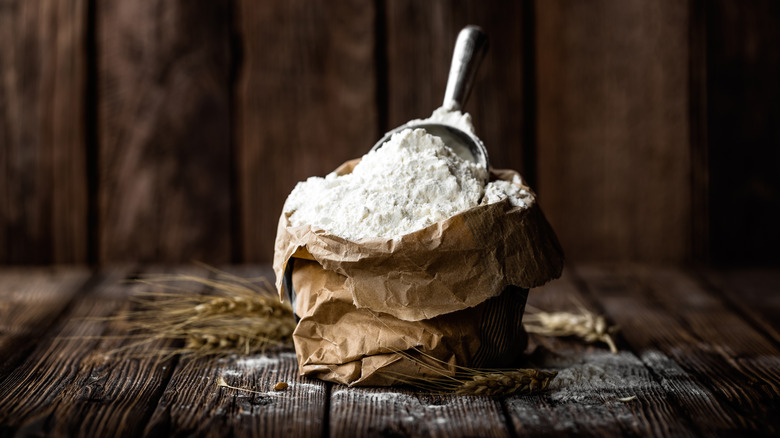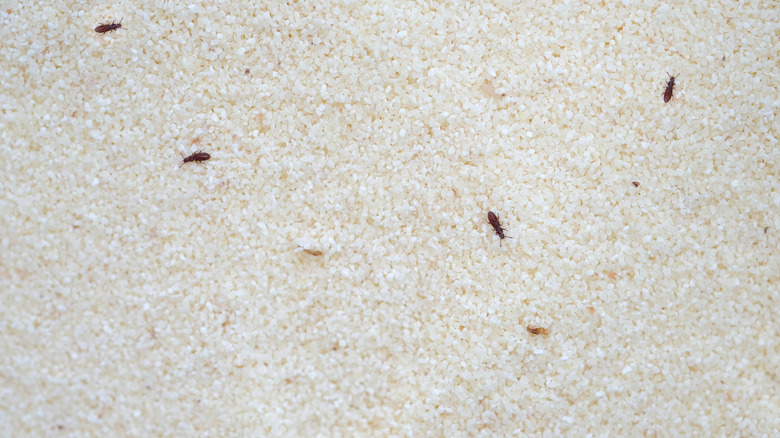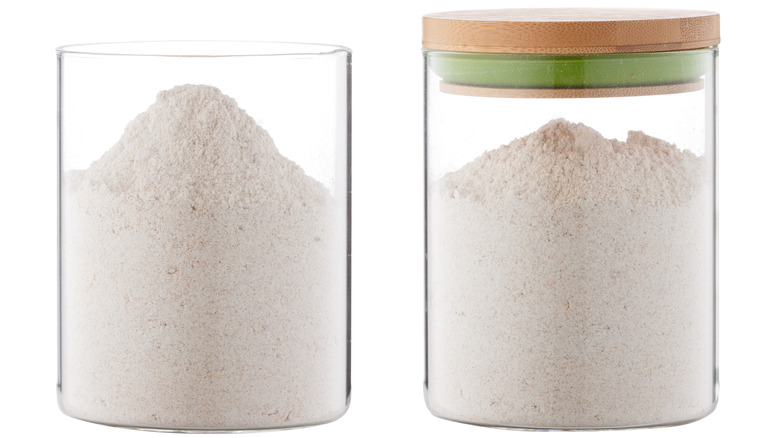Why It Pays To Store Flour In The Refrigerator
Flour is a basic ingredient and necessary in every kitchen. Even if you don't bake, it can be used to coat meats for frying and to thicken gravies and sauces. It's inexpensive, accessible (well, except during the pandemic, per The Atlantic), and easy to store. Or is it?
Flour is a raw agricultural product and can thus be affected by pests. And many pests, especially tiny beetles, are attracted to all kinds of flour. They can easily access it when it's stored in those paper bags they are sold in at the store. Believe us, you'll never forget making a pie crust and happily mixing the dough. Then rolling it out, only to spot countless little pantry weevil larvae making themselves known. You probably won't want to make a pie crust again for a couple of months. And if you've ever seen little bugs fluttering around your pantry – the odds are good that this scenario isn't entirely far-fetched.
Decant your flour
If that image isn't enough to convince you to store your flour in the fridge, how about this? Flour can and will go rancid. The oils in it degrade over time, per Masterclass, especially when the humidity and heat in the kitchen are too high. This can lead to your baked goods having a horrible flavor for no obvious reason. You can try smelling it, per Healthline, but it can be difficult to tell if the ingredient is rancid until you take a bite of the cake or cookies you made. That's quite a way to waste time, money, and effort.
So as soon as you bring a fresh bag home from the grocery store, carefully decant it into another container with an airtight lid (like these ones on Amazon). The refrigerator is more humid than the pantry, and too much moisture can make flour moldy, so when storing it in the fridge, it's important to do it right.
Whole wheat and nut flour can be stored this way too. In fact, those products are more susceptible to rancidity since they have higher oil levels, according to King Arthur Flour.
Store flour in the fridge
You can find containers to store flour online or in most kitchen supply stores; your local supermarket may also have a nice selection. Just make sure the seal is airtight. You don't want the ingredient to absorb flavors from other foods in the fridge after you have gone to all that trouble (per Oregon State Extension). Once your flour is in the container, you should add a label and mark the date you bought it and the best-by date on the original bag. Also, make sure you write down what type of flour it is. Most can look remarkably similar in their natural state.
You can also store this product in the freezer, according to America's Test Kitchen. That will extend the shelf life, and the freezer will kill off any pests that may be present. White varieties will keep up to two years in the freezer, and whole wheat flour will keep for one year.
Masterclass has one more tip about flour storage: Putting a bay leaf into the storage container can help ward off bugs. If you've ever spotted creepy crawlies in your dough, that tip might be worth a try.


